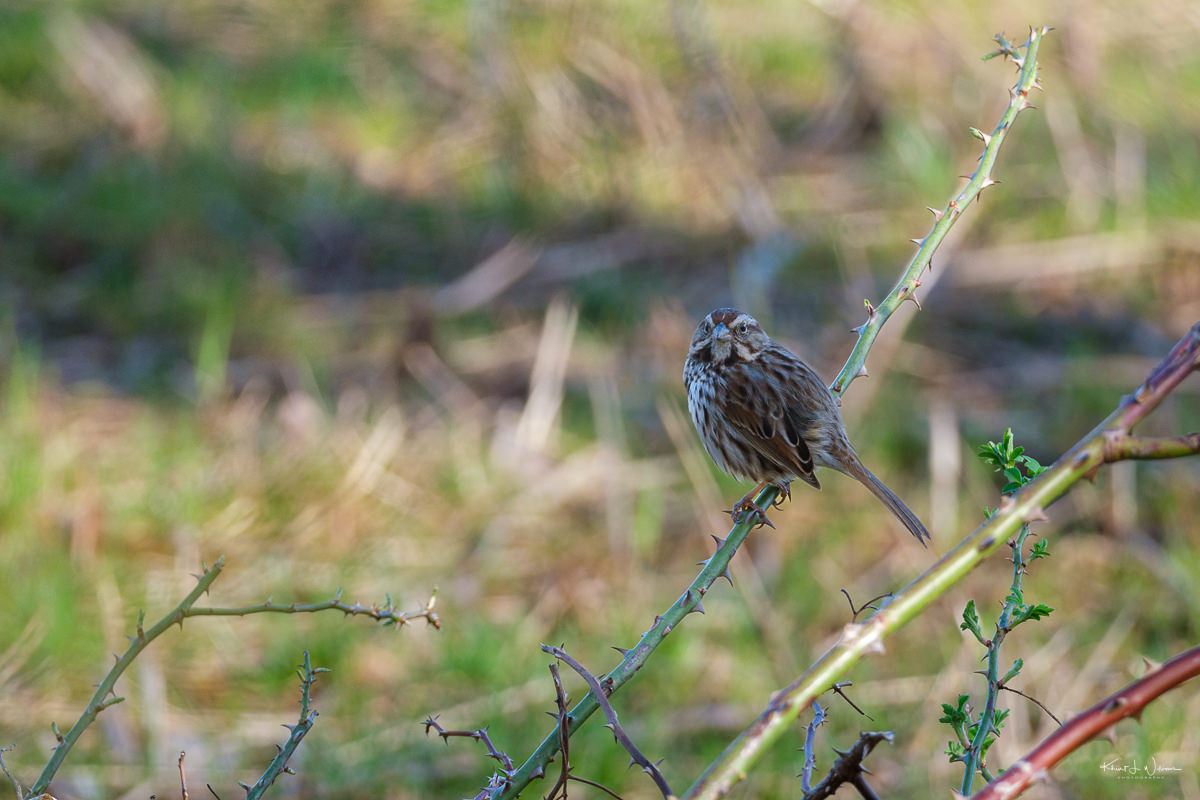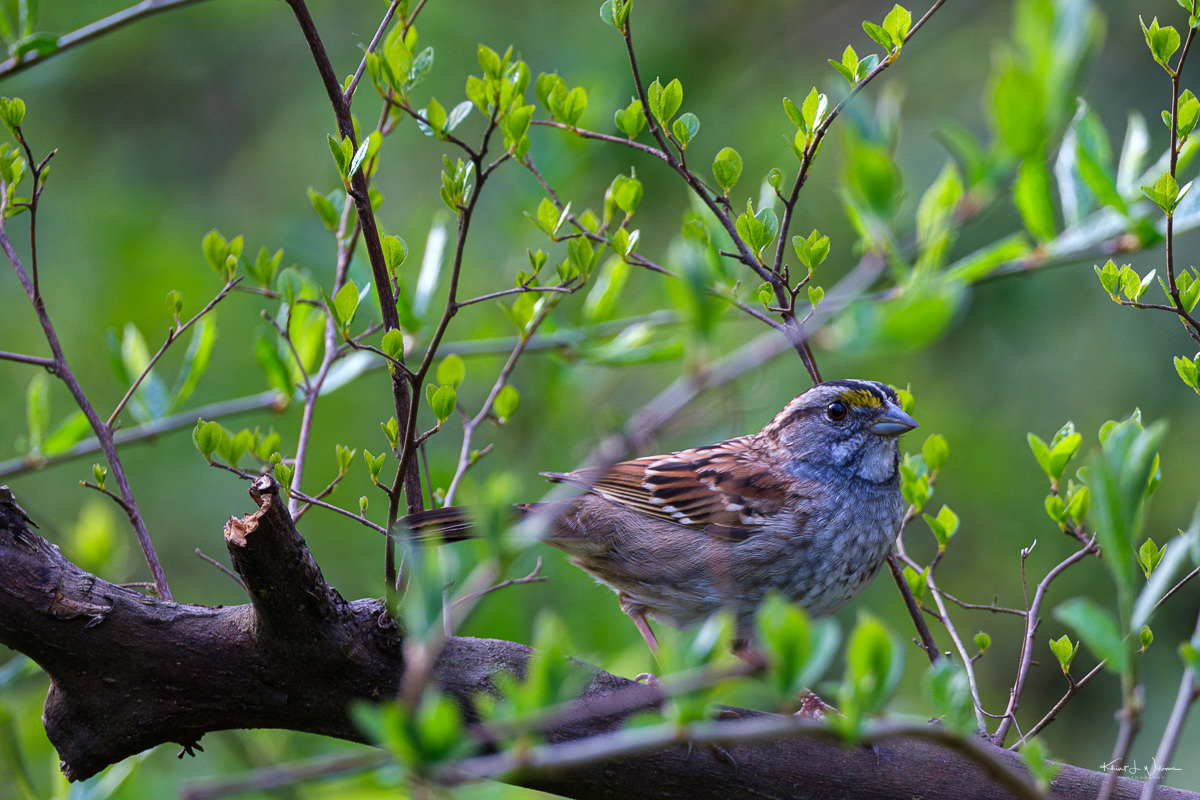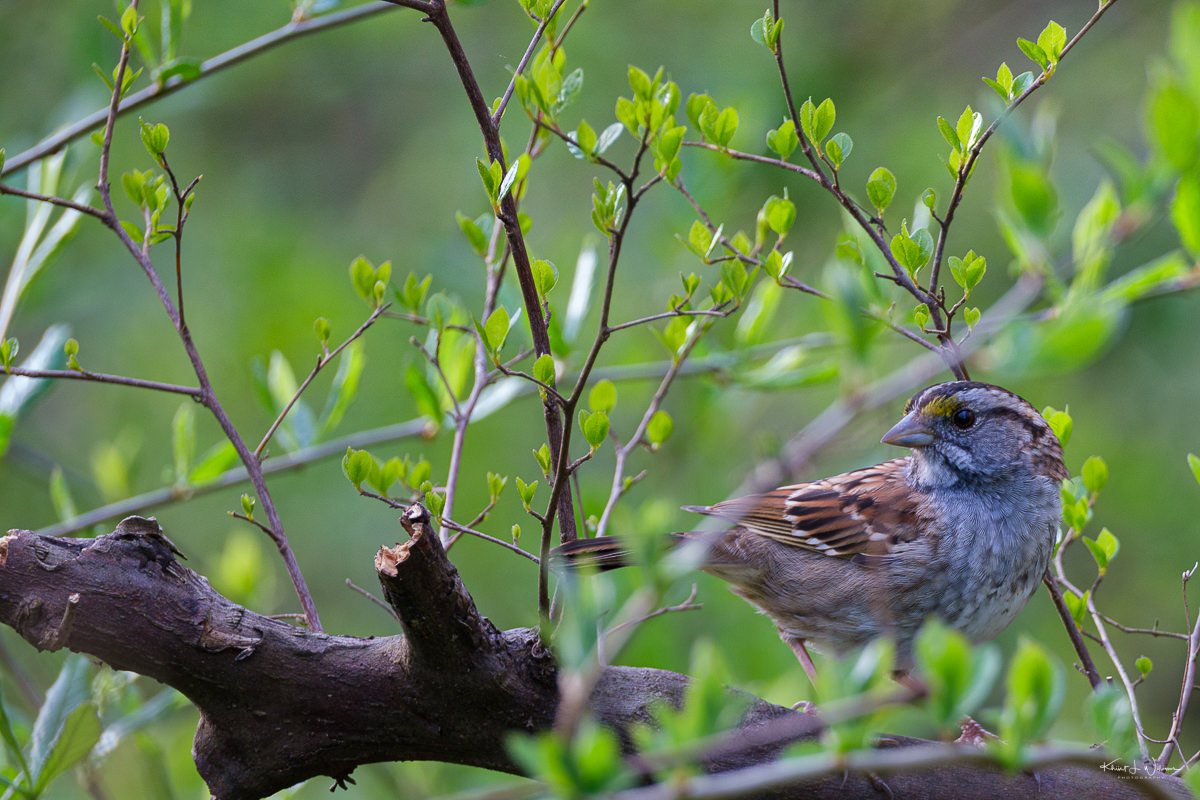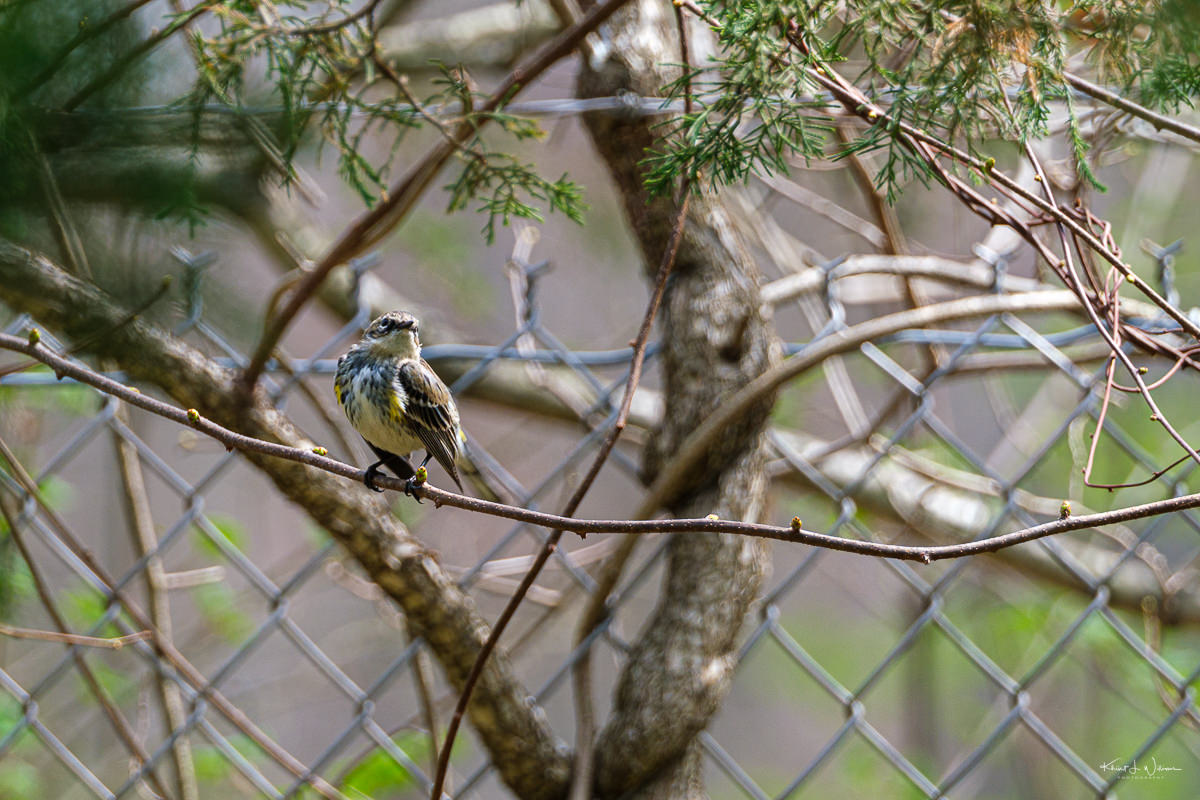While walking through Institute Woods, I heard the most melodious song. The Merlin ID app identified the bird song as the Song Sparrow (Melospiza melodia), a small passerine bird native to North America.
The Song Sparrow (Melospiza melodia) belongs to the family Emberizidae. The bird's plumage is generally brown and streaked, with a streaked breast and a dark spot in the centre of its chest. Its bill is conical and suited for a varied diet that includes seeds, insects, and small fruits.
Song Sparrows inhabit a wide range of habitats, including grasslands, marshes, shrublands, and suburban areas with dense vegetation. They are often seen foraging on the ground or perched on low branches. These sparrows are territorial during the breeding season and build cup-shaped nests in shrubs or grassy areas. They are widespread throughout their range and play a role in seed dispersal and insect control in their ecosystems.
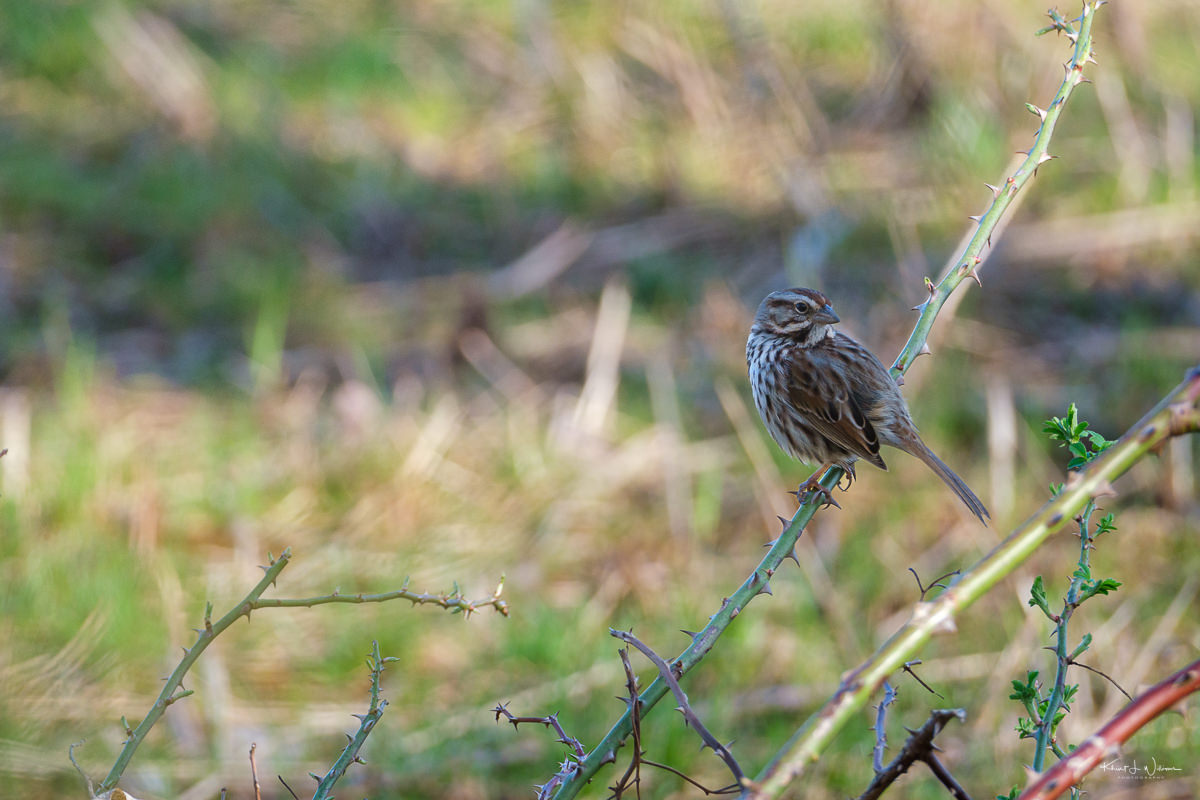
I am afraid to say it because I don't want to put negative vibes out into the universe, but I'm bored at work. Don't get me wrong, I'm happy to have a paycheque but the work that I'm doing is way below the skills and experience I've developed. I spend most of my day reading and taking online courses on Udemy to stave off boredom.
I feel guilty taking the clients money but the contract stipulates that I can't do other work while I'm under contract with them. I wish I had more challenging work but I don't want to be so busy that I have to skip lunch. That's what the last contract was like. I want a balance between boredom and the hamster wheel.
